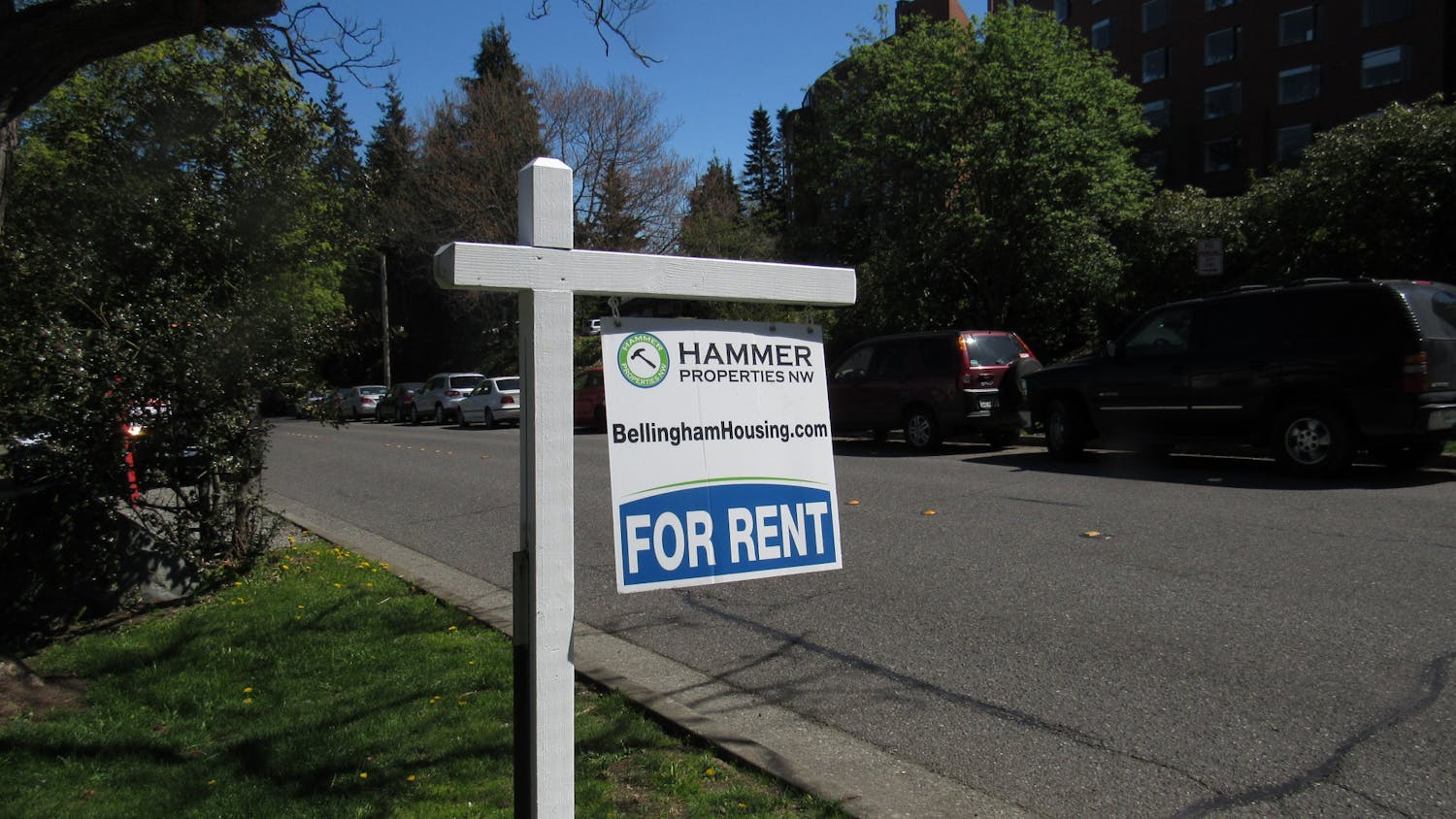
Western Front staff found that the majority of buildings have classrooms with doors that swing outward, making them difficult to barricade, and doors that do not lock from the inside.
University Police Chief Darin Rasmussen acknowledged that Western’s current structures are not ideal for protection. Few classrooms have locks or movable furniture, he said.
"We have the environment we have and until we can change it through remodeling and repairs, we need to be prepared for what can happen today," Rasmussen said.

Though University Police has a fairly good response time, most shootings occur within five minutes, and a lot can happen in a couple of minutes, Rasmussen said.
Rasmussen said people at Western need to be ready to defend themselves until the police arrive if they cannot run or hide in an active shooter situation.
"It's about awareness,” Rasmussen said. “I don't want people to live in fear, I want them to be prepared."
After receiving questions about gun violence stemming from the recent shooting in Parkland, Florida, President Sabah Randhawa sent out an email to the campus community emphasizing prevention of gun violence on Monday, Feb. 26.
"We have all been affected by the images of enraged, scared and exhausted students, parents and educators wondering what can be done to stop school shootings like the most recent incident that claimed the lives of 17 people at a Florida high school,” he said.
The email reminded faculty that only law enforcement can carry firearms on campus and that resources are available to those who pose a threat to others or themselves. He also directed campus community members to watch preparedness videos and to contact legislators with their opinions on bills relating to gun control.
Rasmussen said he agrees with Western’s emphasis on prevention.
“Anything we can prevent is a tragedy that never occurred," Rasmussen said.
Though some think it is unlikely that the university will have to deal with an active shooter, faculty union president Rich Brown said it is probable in the current climate.
“It doesn’t feel like if, it feels like when,” Brown said.
There have been incidents close to home — in June 2014, a shooting at Seattle Pacific University resulted in a student’s death and injuries to three other students. As the shooter was reloading, a student pepper sprayed him, and other students restrained him until law enforcement arrived, according to the FBI.
An FBI study on mass shootings conducted between 2000 and 2013 (included in the project proposal) found that the number of mass shootings are increasing. There were 160 active shooter incidents in this time frame, resulting in 486 people killed and 557 wounded.
"We have all been affected by the images of enraged, scared and exhausted students, parents and educators wondering what can be done to stop school shootings like the most recent incident that claimed the lives of 17 people at a Florida high school."
President Sabah Randhawa
This leaves some faculty concerned with what they see as a lack of safety measures if there is a shooting.
Brown said he is planning to meet with Randhawa this week to discuss the issue of locks, after a faculty member expressed concerns about not being able to keep a shooter out of classrooms or have anything to fight back with.
“If we can’t lock the door, all we can do is run away from the sound,” Brown said.
The long-term goal is electronic door controls, primarily for external doors, Rasmussen said. This security upgrade proposal, submitted in 2016, said Western needs to increase ability to protect students and faculty because current systems don’t meet the needs.
“From the safety and security standpoint, WWU has determined that emergency lockdown capability during an active shooter event is of paramount importance,” the proposal states.

Western’s security is made of communication alert systems, evacuation plans and exterior locks that mostly function using brass keys, according to the capital budget proposal. If the upgrade were fully implemented, the electronic doors would have the ability to immediately lockdown all occupied facilities.
The school has been asking for security upgrades since 2014, and asked for $7.2 million from state funding sources in the 2017-19 biennium budget. But Western received only $1.5 million for the project, according to the budget request comparison sheet.
Brown said Western could probably use the money they received to make doors lockable at minimum.
Randhawa wrote in his email that University Police conduct regular active shooter drills and quarterly Western Alert test to check the emergency preparedness systems on campus.
Rasmussen said University Police trains with the City of Bellingham and Whatcom County Sheriff on active shooter drills. He said the last one was about two years ago, but that the Western Alert drills give them the opportunity to test the systems.
There is no mandatory training for faculty or students, Rasmussen said, but University Police does offer a voluntary active shooter training to departments on campus.
He said there has been increased interest in the training, but that many departments have not opted to do it yet.
“It doesn’t feel like if, it feels like when."
Rich Brown, faculty union president
Though Brown said that locks would improve campus security, he said it wouldn’t address the root of the issue. Brown said only real gun control at a national level would fix the problem.
“We’re dealing with a band-aid,” Brown said.
Faculty Senate President Allison Giffen said the Faculty Senate discussed adding evacuation plans and emergency instructions in every classroom at their meeting on Monday, Feb. 26.
“Everybody wants to try and create the safest space we can,” Giffen said.
Giffen said that the university could make information more available about what to do in an active shooter incident on campus.
Student Fernanda Govea said she doesn’t feel safe on campus knowing that many classroom doors can’t be locked. But Govea said she doesn’t consider it Western’s responsibility to make campus safer from active shooters.
“I think that’s the government’s job,” Govea said.
Randhawa’s email highlighted several bills moving through the state legislature that he wrote would offer “common sense restrictions” on gun laws and preserve citizens’ rights to own guns.
“I urge you to contact your state representatives to voice your opinion on these measures,” he wrote in the email.
If you have reactions or concerns, share them with us at westernfrontonline@gmail.com. Update: The initial headline on this story was updated from "Western has limited options in the case of an active shooter, police chief says" to the current headline on March 2, 2018, as the police chief did not explicitly say that and the headline's meaning was not completely clear.




